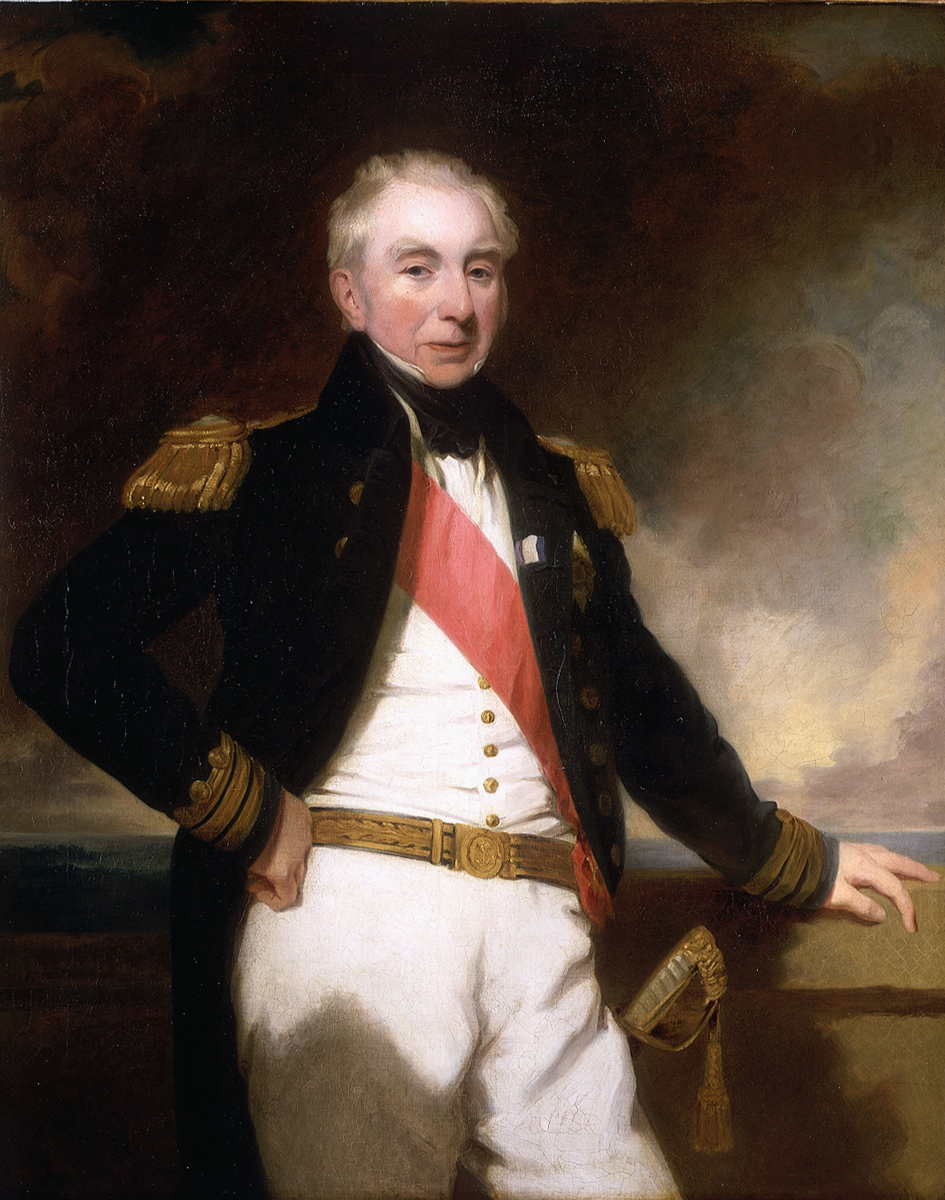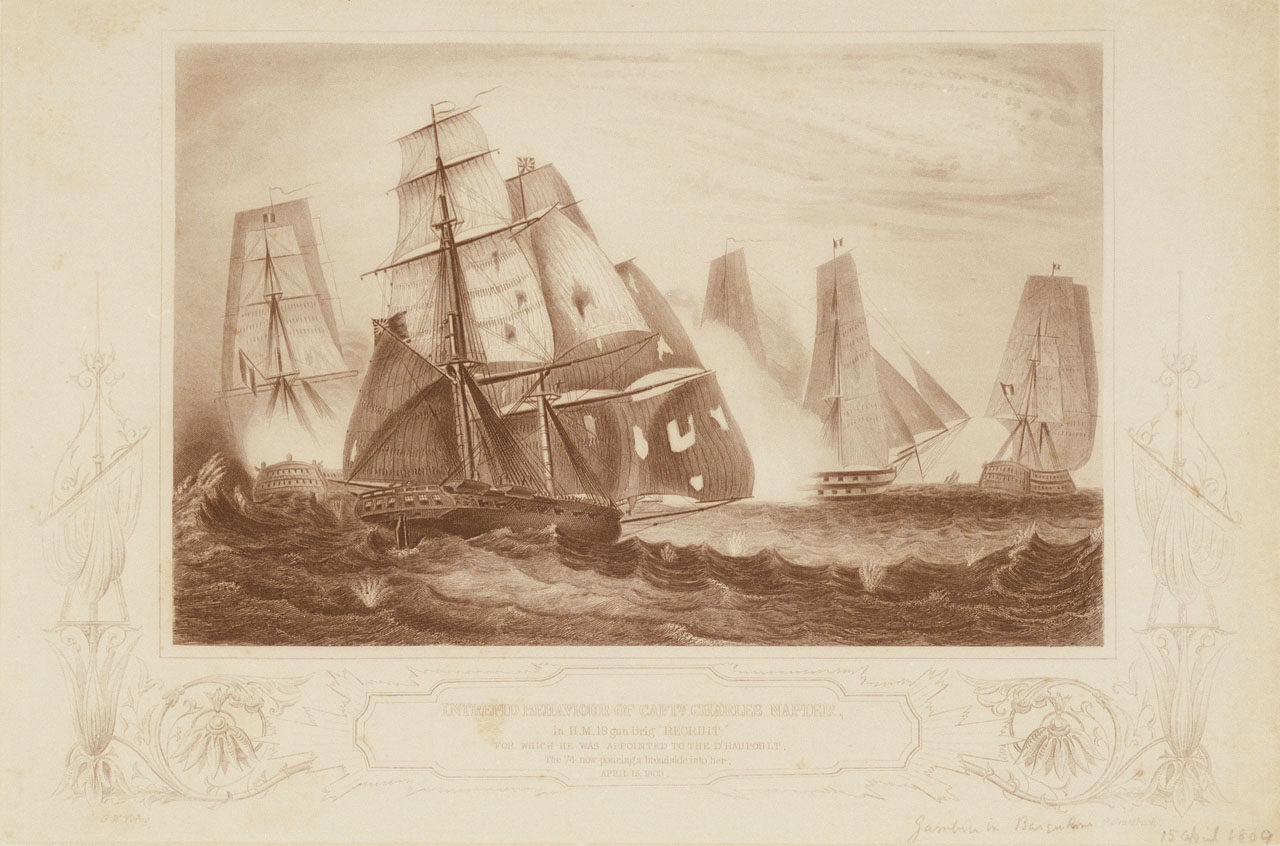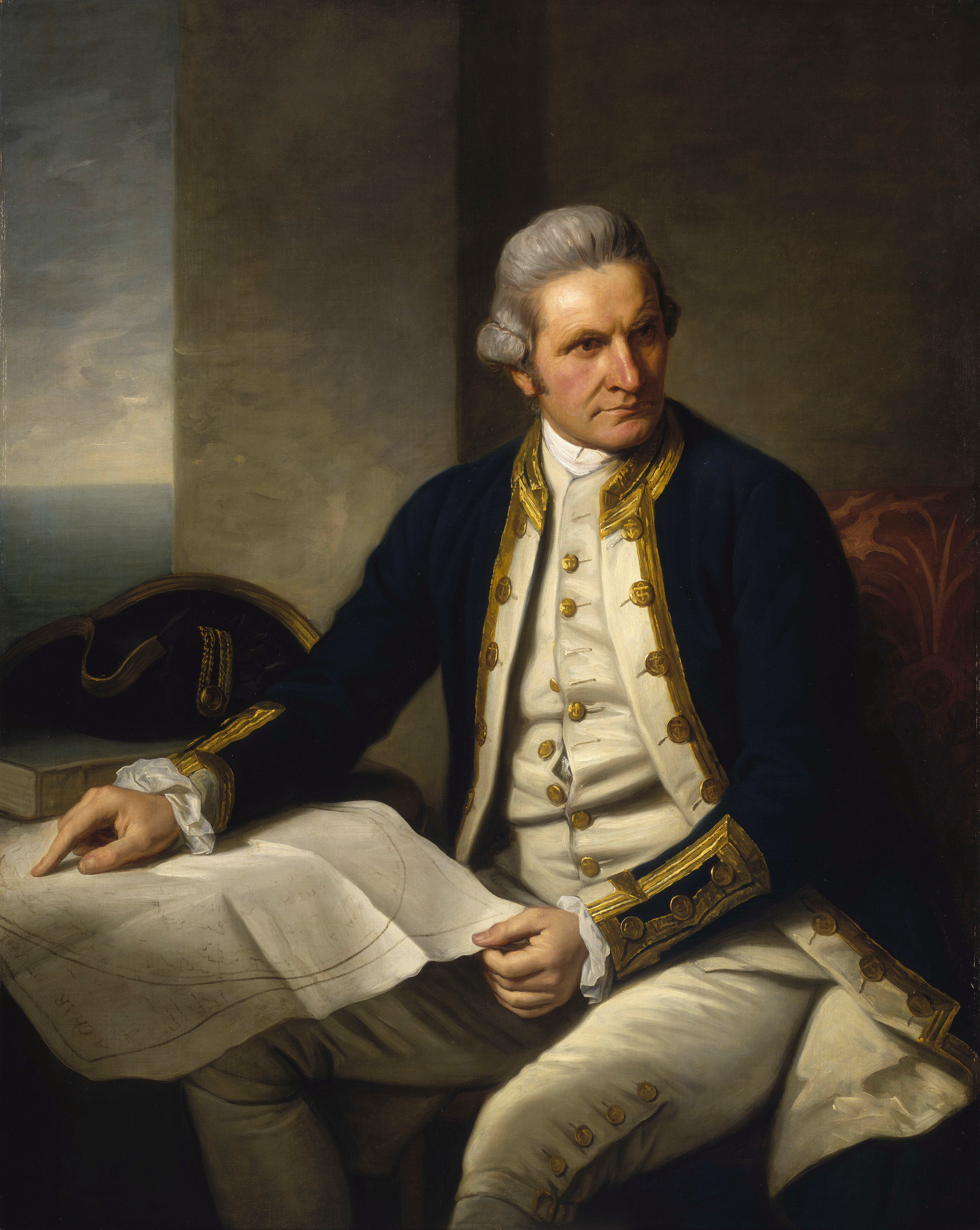|
HMS Hydra (1838)
HMS ''Hydra'' was the lead ship of her class of wooden steam paddle sloops of the British Royal Navy, launched in 1838 at Chatham Dockyard. After taking part in operations during the Syrian War in 1840, she then served on anti-slavery operations and also as a survey vessel. She was scrapped in 1870. Ship history ''Hydra'' was commissioned on 19 January 1839 under Commander Anthony William Milward to operate in the Mediterranean Sea. After Milward's death in early 1840 Commander Robert Spencer Robinson was appointed to her. ''Hydra'' then saw action during the Syrian War, as part of a squadron under the command of Commodore Charles Napier (the ships , , , , , frigate , and steamer ) operating off the coast of Ottoman Syria. In Admiral Sir Robert Stopford's report on the Anglo-Austrian-Turkish landings in September 1840 he noted that the steam vessels had been "eminently useful in constantly moving along a great extent of coast with troops and arms, and taking part in the att ... [...More Info...] [...Related Items...] OR: [Wikipedia] [Google] [Baidu] |
Cape Flattery
Cape Flattery () is the northwesternmost point of the contiguous United States. It is in Clallam County, Washington on the Olympic Peninsula, where the Strait of Juan de Fuca joins the Pacific Ocean. It is also part of the Makah Reservation, and is the northern boundary of the Olympic Coast National Marine Sanctuary. Cape Flattery can be reached from a short hike, most of which is boardwalked. Cape Flattery Trail, with photographs. The westernmost point in the contiguous United States is at Cape Alava, south of Cape Flattery in Olympic National Park. However, the westernmost tip of Cape Flattery is almost exactly as far west as Cape Alava, the difference being approximately 5 seconds of longitude, about , at high tide and somewhat more at low tide. The Cape Flattery Lighthouse is on Tatoosh Island, just off the cape. Makah Bay and Neah Bay are on either side of the cape. Neah Bay, Washington is the closest town to the cape. History James Cook Cape Flattery is the oldest per ... [...More Info...] [...Related Items...] OR: [Wikipedia] [Google] [Baidu] |
Hydra-class Sloop
The ''Hydra'' class were a class of three paddlewheel steam sloops of the British Royal Navy. They saw active service variously in the Baltic during the Crimean War, against Ottoman forces in Syria and against slavers in West Africa. Latterly ''Hydra'' and ''Hecate'' were used for survey in the Mediterranean, the Pacific, Australia and the Atlantic, and thus their names were re-used for the s in the late 20th century. Two of the class were broken up after more than twenty-five years of service, and ''Hecla'' was sold for commercial use in 1863. Design The ships were designed by Sir William Symonds and were approved on 3 November 1837. They were built of wood, displaced 1,096 tons and had a length on the gundeck of . Propulsion Power was provided by a two-cylinder side-lever steam engine driving paddle wheels. In ''Hecla'' and ''Hecate'' this engine was provided by Scott & Sinclair, and was rated at 240 nominal horsepower; in ''Hydra'' the steam engine was provided by Boulton ... [...More Info...] [...Related Items...] OR: [Wikipedia] [Google] [Baidu] |
Sierra Leone
Sierra Leone,)]. officially the Republic of Sierra Leone, is a country on the southwest coast of West Africa. It is bordered by Liberia to the southeast and Guinea surrounds the northern half of the nation. Covering a total area of , Sierra Leone has a tropical climate, with diverse environments ranging from savanna to rainforests. The country has a population of 7,092,113 as of the 2015 census. The capital and largest city is Freetown. The country is divided into five administrative regions, which are subdivided into 16 districts. Sierra Leone is a constitutional republic with a unicameral parliament and a directly elected president serving a five-year term with a maximum of two terms. The current president is Julius Maada Bio. Sierra Leone is a secular nation with the constitution providing for the separation of state and religion and freedom of conscience (which includes freedom of thoughts and religion). Muslims make up about three-quarters of the population, t ... [...More Info...] [...Related Items...] OR: [Wikipedia] [Google] [Baidu] |
Cape Colony
The Cape Colony ( nl, Kaapkolonie), also known as the Cape of Good Hope, was a British colony in present-day South Africa named after the Cape of Good Hope, which existed from 1795 to 1802, and again from 1806 to 1910, when it united with three other colonies to form the Union of South Africa. The British colony was preceded by an earlier corporate colony that became an original Dutch colony of the same name, which was established in 1652 by the Dutch East India Company (VOC). The Cape was under VOC rule from 1652 to 1795 and under rule of the Napoleonic Batavia Republic from 1803 to 1806. The VOC lost the colony to Great Britain following the 1795 Battle of Muizenberg, but it was acceded to the Batavia Republic following the 1802 Treaty of Amiens. It was re-occupied by the British following the Battle of Blaauwberg in 1806, and British possession affirmed with the Anglo-Dutch Treaty of 1814. The Cape of Good Hope then remained in the British Empire, becoming self- ... [...More Info...] [...Related Items...] OR: [Wikipedia] [Google] [Baidu] |
Sheerness
Sheerness () is a town and civil parish beside the mouth of the River Medway on the north-west corner of the Isle of Sheppey in north Kent, England. With a population of 11,938, it is the second largest town on the island after the nearby town of Minster which has a population of 21,319. Sheerness began as a fort built in the 16th century to protect the River Medway from naval invasion. In 1665 plans were first laid by the Navy Board for Sheerness Dockyard, a facility where warships might be provisioned and repaired. The site was favoured by Samuel Pepys, then Clerk of the Acts of the navy, for shipbuilding over Chatham inland. After the raid on the Medway in 1667, the older fortification was strengthened; in 1669 a Royal Navy dockyard was established in the town, where warships were stocked and repaired until its closure in 1960. Beginning with the construction of a pier and a promenade in the 19th century, Sheerness acquired the added attractions of a seaside resort. ... [...More Info...] [...Related Items...] OR: [Wikipedia] [Google] [Baidu] |
West Africa Squadron
The West Africa Squadron, also known as the Preventative Squadron, was a squadron of the British Royal Navy whose goal was to suppress the Atlantic slave trade by patrolling the coast of West Africa. Formed in 1808 after the British Parliament passed the Slave Trade Act 1807 and based out of Portsmouth, England, it remained an independent command until 1856 and then again from 1866 to 1867. The impact of the Squadron has been debated, with some commentators describing it as having a significant role in the ending of the slave trade and other commentators describing as being poorly resourced and plagued by corruption. Sailors in the Royal Navy considered it to be one of the worst postings due to the high levels of tropical disease. Over the course of its operations, it managed to capture around 6% of the transatlantic slave ships and freed around 150,000 Africans. Between 1830 and 1865, almost 1,600 sailors died during duty with the Squadron, principally of disease. History ... [...More Info...] [...Related Items...] OR: [Wikipedia] [Google] [Baidu] |
Woolwich
Woolwich () is a district in southeast London, England, within the Royal Borough of Greenwich. The district's location on the River Thames led to its status as an important naval, military and industrial area; a role that was maintained throughout the 16th to 20th centuries. After several decades of economic hardship and social deprivation, the area now has several large-scale urban renewal projects. Geography Woolwich is situated from Charing Cross. It has a long frontage to the south bank of the Thames river. From the riverside it rises up quickly along the northern slopes of Shooter's Hill towards the common, at and the ancient London–Dover Road, at . The ancient parish of Woolwich, more or less the present-day wards Woolwich Riverside and Woolwich Common, comprises . This included North Woolwich, which is now part of the London Borough of Newham. The ancient parishes of Plumstead and Eltham became part of the civil parish of Woolwich in 1930. Parts of th ... [...More Info...] [...Related Items...] OR: [Wikipedia] [Google] [Baidu] |
North America And West Indies Station
The North America and West Indies Station was a formation or command of the United Kingdom's Royal Navy stationed in North American waters from 1745 to 1956. The North American Station was separate from the Jamaica Station until 1830 when the two combined to form the North America and West Indies Station. It was briefly abolished in 1907 before being restored in 1915. It was renamed the America and West Indies Station in 1926. It was commanded by Commanders-in-Chief whose titles changed with the changing of the formation's name, eventually by the Commander-in-Chief, America and West Indies Station. History The squadron was formed in 1745 to counter French forces in North America, with the headquarters at the Halifax Naval Yard in Nova Scotia (now CFB Halifax). The area of command had first been designated as the North American Station in 1767, under the command of Commodore Samuel Hood, with the headquarters in Halifax from 1758 to 1794, and thereafter in Halifax and Be ... [...More Info...] [...Related Items...] OR: [Wikipedia] [Google] [Baidu] |
Robert Stopford (Royal Navy Officer)
Admiral Sir Robert Stopford (5 February 1768 – 25 June 1847), was a distinguished officer in the Royal Navy whose career spanned over 60 years, from the French Revolutionary Wars to the Syrian War. Naval career Stopford was the third son of James Stopford, 2nd Earl of Courtown, and his wife Mary (née Powys). He joined the Royal Navy in 1780 and became a Lieutenant in 1785. Commander Stopford was captain of between December 1789 and October 1790. In 1790 he was promoted to captain at the age of 22 and was briefly captain of HMS ''Lowestoffe''. Stopford fought at the Battle of the Glorious First of June in 1794, commanding the frigate (32). During the battle ''Aquilon'' had the task of standing off and repeating the signals from the flagship. ''Aquilon'' also towed the ''Marlborough'' out of the line of fire when she was dismasted, for which Lord Howe thanked him personally.''United service Magazine'' (1847), p.639. One of Stopford's officers on ''Aquilon'' was Franci ... [...More Info...] [...Related Items...] OR: [Wikipedia] [Google] [Baidu] |
Ottoman Syria
Ottoman Syria ( ar, سوريا العثمانية) refers to divisions of the Ottoman Empire within the region of Syria, usually defined as being east of the Mediterranean Sea, west of the Euphrates River, north of the Arabian Desert and south of the Taurus Mountains. Ottoman Syria became organized by the Ottomans upon conquest from the Mamluk Sultanate in the early 16th century as a single eyalet (province) of Damascus Eyalet. In 1534, the Aleppo Eyalet was split into a separate administration. The Tripoli Eyalet was formed out of Damascus province in 1579 and later the Adana Eyalet was split from Aleppo. In 1660, the Eyalet of Safed was established and shortly afterwards renamed Sidon Eyalet; in 1667, the Mount Lebanon Emirate was given special autonomous status within the Sidon province, but was abolished in 1841 and reconfigured in 1861 as the Mount Lebanon Mutasarrifate. The Syrian eyalets were later transformed into the Syria Vilayet, the Aleppo Vilayet and t ... [...More Info...] [...Related Items...] OR: [Wikipedia] [Google] [Baidu] |
Charles Napier (Royal Navy Officer)
Admiral Sir Charles John Napier KCB GOTE RN (6 March 1786Priscilla Napier (1995), who is not elsewhere free from error, gives the birth year as 1787 (p. 1, and book title), but provides no evidence. All other authorities agree on 1786. – 6 November 1860) was a British naval officer whose sixty years in the Royal Navy included service in the War of 1812, the Napoleonic Wars, Syrian War and the Crimean War (with the Russians), and a period commanding the Portuguese navy in the Liberal Wars. An innovator concerned with the development of iron ships, and an advocate of humane reform in the Royal Navy, he was also active in politics as a Liberal Member of Parliament and was probably the naval officer most widely known to the public in the early Victorian Era. French Revolutionary and Napoleonic Wars He became a midshipman in 1799 aboard the 16-gun sloop , but left her in May 1800 before she was lost with all hands. He next served aboard , flagship of Sir John Borlase W ... [...More Info...] [...Related Items...] OR: [Wikipedia] [Google] [Baidu] |
National Maritime Museum
The National Maritime Museum (NMM) is a maritime museum in Greenwich, London. It is part of Royal Museums Greenwich, a network of museums in the Maritime Greenwich World Heritage Site. Like other publicly funded national museums in the United Kingdom, it has no general admission charge; there are admission charges for most side-gallery temporary exhibitions, usually supplemented by many loaned works from other museums. Creation and official opening The museum was created by the National Maritime Museum Act 1934 under a Board of Trustees, appointed by HM Treasury. It is based on the generous donations of Sir James Caird (1864–1954). King George VI formally opened the museum on 27 April 1937 when his daughter Princess Elizabeth accompanied him for the journey along the Thames from London. The first director was Sir Geoffrey Callender. Collection Since the earliest times Greenwich has had associations with the sea and navigation. It was a landing place for the Romans, He ... [...More Info...] [...Related Items...] OR: [Wikipedia] [Google] [Baidu] |

_aground_in_1861.jpg)



.jpg)

